Summer residents who decide to decorate their plots with beautiful shrubs immediately face the question - which shrub is best to plant?
Ideally, such a plant should satisfy the following requirements:
- Be beautiful throughout the summer season.
- Easy to care for.
- Frost-resistant, able to withstand our difficult winters.
Winter-hardy shrubs for Siberia
Below are the names and characteristics of just such ornamental shrubs: frost-resistant, unpretentious and beautifully flowering.
Many shrubs have proven themselves to be winter-hardy, undemanding and at the same time very decorative in our climate. I’ll tell you about the most popular ones, which can be planted in almost all regions of our country, including the Urals and Siberia.
Derain white
Famous for its brightly colored red bark. There is a form with large green leaves, which become multi-colored by autumn, and a more compact turf with white-edged leaves. To ensure that the tree bark is always bright, the bushes are pruned short every year, leaving stumps of shoots - a few centimeters above the soil level. With this formation, the bush forms expanding thickets.
- Shrub height from one and a half to two meters.
- Blooms in early summer.
- Derain is exceptionally frost-resistant, decorative and unpretentious in all respects. Can be grown not only in the Moscow region, but also in Siberia and the Urals
- Grows in any soil and tolerates heat and shade well.
- Suitable for planting in the background of a plot or along a fence, as well as for hedges.
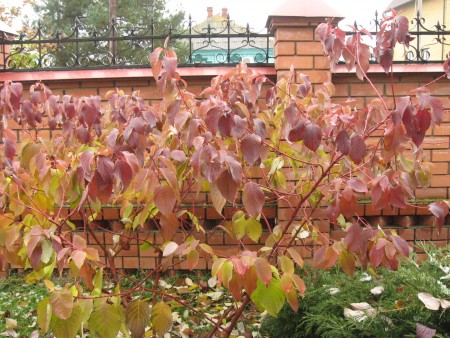
This turf is especially beautiful in the fall
This is a type of tree with green leaves that turn burgundy in autumn.
The leaves of this plant remain painted with a white pattern all summer.
Derain grows quickly and in order for the hedge to be always neat, it will have to be carefully looked after.
The plant can be formed into either a lush bush or a small tree.
Well, where else can you find a bush with such original, red shoots?
Do not miss:
You can choose a beautiful variety of wood on this page ⇒
Read the rules for planting, caring for and propagating derain here ⇒
Deciduous barberries
They are distinguished by enviable winter hardiness and are easy to care for. The color of the leaves can be yellow, green, purple, red. Barberries are suitable for any fertile soil, open space or partial shade. They are easy to trim, but you don’t have to trim them, limiting yourself to removing damaged and excess branches in the spring.
- The height of different types and varieties varies from 60 cm to 2 m.
- An extremely unpretentious, frost-resistant shrub. Grows in shade, sun and almost any soil. It overwinters without shelter even in Siberia. The colors of the leaves are striking in their diversity.
- The application is universal, from planting low-growing varieties on hills to creating hedges. It can serve as both a background and an edge; it looks beautiful on a green lawn.
Such an elegant bush will decorate any hill.
Here the barberry bush acts as the edge of the spruce.
On a green lawn, variegated shrubs look very colorful.
Picturesque and practical hedges are made from barberry, but we must remember that this shrub is terribly prickly and not particularly pleasant to work with. Read more about using barberry in garden design read here.
Do not miss:
Spirea
Almost all spirea are fast-growing, frost-resistant shrubs, unpretentious and profusely flowering.There are two groups of spirea - spring-flowering and summer-flowering. In spring-blooming species, such as Ash Spiraea, the drooping branches are entirely decorated with tiny white flowers. These spirea bloom once. In spring-flowering spireas, old and weak branches are cut out after flowering.
Summer-flowering spirea are characterized by long flowering. Pink (various shades) flowers are usually collected in flat spherical or spike-shaped inflorescences. Of the summer-flowering spireas, interesting is the Boumalda spirea (height 60 cm), blooming with graceful, carmine-pink flat inflorescences. The Goldflame variety has young leaves that are yellow and orange, so the bush looks very elegant in spring.
Varieties of Japanese spirea (height 60 cm) are also very interesting. For example, the Crispa variety is distinguished by very decorative bright flowers.
Annual spring pruning to a short stump a few centimeters high helps the bushes of summer-flowering spirea to maintain their compact spherical shape.
- The height of the bushes, depending on the variety, is from 0.5 m to 2 m.
- If you select spring-flowering and summer-flowering varieties, flowering can continue almost throughout the spring and summer.
- Spiraea does not require fertile soil. Grows quickly in both sun and partial shade. Most spirea are winter-hardy and do not need shelter even in the harsh Siberian winters.
- These shrubs are not only decorative, but also have a wide variety of sizes, bush shapes, leaf colors and different flowering times. Thanks to these qualities, you can decorate the garden with only spirea.
Such tall shrubs are suitable for single plantings or for growing in hedges.
You can create such a picturesque corner by planting spirea with hostas and juniper.
The low-growing Japanese spirea makes elegant borders. It also looks appropriate in rockeries.
Do not miss:
Varieties of spirea for landscaping summer cottages with photos and descriptions ⇒
Japanese spirea: planting, care, propagation, use in garden design ⇒
Hydrangea
Tree hydrangea, a shrub of North American origin, proved to be the most winter-hardy. Other species (originally from China and Japan) are less frost-resistant and more difficult to care for.
Tree hydrangea is common in our gardens, but for some reason everyone wants to see plants with blue, pink or even reddish inflorescences in their gardens. Such hydrangeas, of course, are spectacular, but more capricious, although among them there are varieties that some gardeners successfully grow in the northern regions.
But if you haven't grown hydrangea in your garden, start with tree hydrangea, an easy-to-care-for, showy shrub with huge caps of white flowers.
Hydrangea paniculata grows well in the harsh regions of Russia, a very beautiful wintering shrub up to three meters high (ours does not reach such a height) with a dense spherical crown. The inflorescence is a wide-pyramidal panicle 15-30 cm long and 30 cm wide. The flowers are white, turning red in autumn.
- The height of the bushes is up to two meters.
- Blooms from mid-summer.
- Hydrangeas are extremely moisture-loving, tolerate shade well, and love well-drained, fertile, acidic soil. Therefore, peat is added when planting. The soil can be acidified with iron sulfate.
- Hydrangeas are planted as single bushes or in groups. The plant goes well with other coniferous and deciduous ornamental shrubs.
Such a picturesque shrub is sure to attract attention.
Do not miss:
Cinquefoil shrub
Deciduous shrubs, prostrate or compact. The bush-like forms of cinquefoil have three names at once: Kuril tea, bush cinquefoil and five-leaf plant. Cinquefoil is made attractive by the abundance of small flowers. The most common is the form with yellow flowers.
The flowers are solitary or in a few racemes or umbellate inflorescences, medium-sized. The plant's bright green, small carved foliage is also decorative. Cinquefoils do not tolerate dry air well.
- Bushes one to one and a half meters high.
- The shrub blooms for a very long time - almost from the beginning of summer to the beginning of autumn.
- Cinquefoils are photophilous, although they tolerate slight partial shade, are quite drought-resistant, and require rich soils, which must be moderately moist.
- Winter-hardy: species forms can withstand forty-degree frosts, varieties are less tolerant of low temperatures.
- Cinquefoil is suitable for creating borders and low hedges, looks elegant in single and group plantings, and combines harmoniously with coniferous plants.
Here is such a neat bush of Potentilla fruticosa.
Cinquefoil tolerates clipping well and makes colorful hedges and borders.
Bladderwort viburnum
Large, frost-resistant shrub. Both of its forms - both with golden and purple leaves - are always decorative: in the spring, when the leaves bloom, during flowering (it blooms with white corymbose inflorescences) and after it, when clusters of red fruits are formed.
- The height of the bushes, depending on the variety, is from one to three meters.
- Flowering in early summer, for 20 days.
- Bladderwort is unpretentious, drought-resistant and shade-tolerant, but it is better to plant in full sun so that the leaves retain their bright color. Winters without shelter in the northern regions and Siberia.
- Suitable for tall hedges and single plantings.
These are the different types of vesicles. There are shrubs with different leaf colors.
Snowberry
Snowberries come in white and pink. If you are interested in the most cold-resistant shrubs, then plant white snowberry; it can easily tolerate even the coldest winters.
Over time, it grows strongly and can grow in any conditions, both in the open sun and in the dense shade of trees. The shrub is valued for its many large, decorative, white marble-like fruits that form in the fall.
It lends itself well to pruning; bushes are thinned out in early spring and trimmed in summer.
- It grows up to 2.5 meters wide and 1.5 meters high.
- Snowberry grows on any soil, prefers a sunny place. Minimal care: the plant is drought-resistant, does not require fertilizing, can easily tolerate heat, and is not susceptible to diseases and pests.
- With its white fruits it looks good on dark greenery: on the lawn, against the backdrop of conifers.
Snowberry hedges look elegant and require very little maintenance.
Ornamental shrubs for summer cottages with average winter hardiness
The plants described below, although they are not particularly frost-resistant, do not require special shelter for the winter. In most cases, simply covering the bushes with snow is enough.
Deytsia
If the action is given room, in June it will be covered with small flowers. The color of the flowers (and they can be both double and non-double) varies from white to intense pink.
In our climate, Deutzia rough is considered the most unpretentious. It blooms with white and pink flowers. It is not very demanding on the soil; it grows well wherever water does not stagnate. Adapts to both sun and partial shade. Faded branches are pruned after flowering. Old branches are cut down to the base.
- Most varieties of deutia do not exceed 120-170 cm in height.
- Flowering in spring and summer (depending on variety)
- The shrub is easy to care for; drought-resistant and not susceptible to diseases and pests. In winter, it is advisable to press the branches to the ground (at -25º the buds freeze slightly)
- Deutia makes picturesque, unformed hedges. You can plant a mixborder in the background or cover the base of tall bushes.
Planting deutia hedges in the northern regions is not recommended. Still, this shrub is not winter-hardy enough for such purposes.
Keria japonica
An unpretentious shrub that blooms annually in April-May with yellow flowers. May bloom again.
The non-double form is very elegant: slender, slightly drooping branches, reaching a length of one and a half meters, yellow flowers, similar to large buttercup flowers. And after flowering, the bush looks lovely, thanks to its very beautiful bright green leaves, similar to young birch leaves.
- The height of the bushes is up to two meters.
- Blooms in spring. Flowering is long, almost two months.
- Prefers a place in the sun. It can grow in partial shade, but its decorative qualities are noticeably lost.Regular watering and periodic feeding are required.
- Used for single and group plantings. It goes well with conifers and looks beautiful on a green lawn.
This plant can also be grown in pots. Of course, the size of the bush in this case will be much more modest.
Weigela
When in bloom, it is the most beautiful of all the shrubs listed above. But to show off its drooping branches in all its glory, it requires a lot of space. Loves fertile soil and annual pruning, but is generally unpretentious. Immediately after flowering, branches with faded flowers are shortened.
Weigela Variegata is more compact and restrained in growth - a bush up to 120 cm high with pale pink flowers and yellow-edged leaves.
Weigels do not like to grow in the wind. When planting, it is necessary to maintain a distance between seedlings of at least two meters.
- On average, the height of weigela is 1.5 - 2 meters.
- It blooms in May-June with pink, white or ruby-red tubular flowers. Prone to re-blooming.
- Weigela grows in any soil, in direct sun and partial shade.
- The most frost-resistant varieties that winter well both in Siberia and in the Moscow region: “Alba”, “Striatum”, “Shtyriaka”, “Bristol ruby”.
- Considering the high decorative value of this shrub, it is usually planted in the foreground: at the entrance to the house, along the paths or on the lawn.
Weigela will harmoniously fit into any corner of the garden.
Do not miss:
Chaenomeles (Japanese quince)
A very common shrub because it can grow on any soil, both in the sun and in the shade. It blooms brightly in spring and bears golden, fragrant fruits in autumn. The bushes do not need pruning: they are thinned out occasionally.
- The height of Chaenomeles bushes is from 1 to 3 meters.
- This plant is not only an ornamental, but also a fruit shrub.
- Frost-resistant, but in severe winters the ends of the shoots may freeze.
The shrub begins to bear fruit at 3–4 years of age and bears fruit annually.
It should be noted that weigela, deutzia, and kerria can have severely frozen branches in severe winters. But nothing bad will happen: the bushes grow quickly.
Of all the listed assortments, I love summer spireas, weigelas, vesicles and barberries most of all for their beautiful and long flowering, high decorative value throughout the season
Shrubs should be placed in accordance with their growth and ability to grow in breadth.
About the rules for pruning ornamental shrubs can be read here.
All of the plants listed are not rare; they are quite easy to acquire.
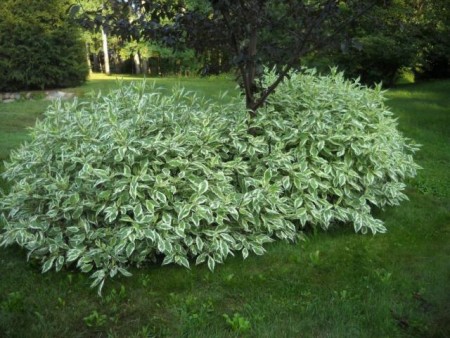


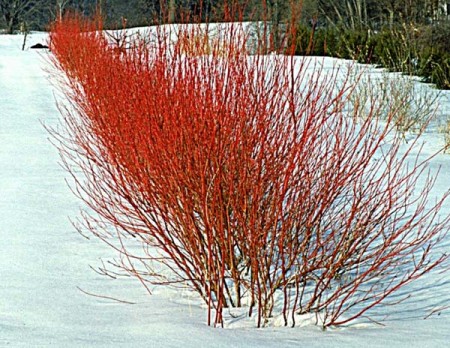

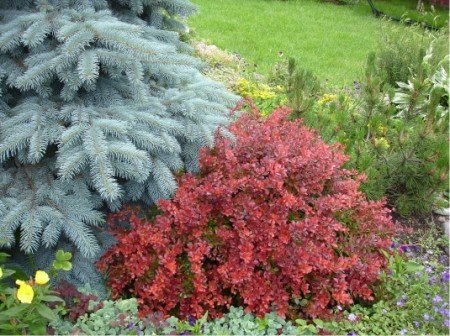
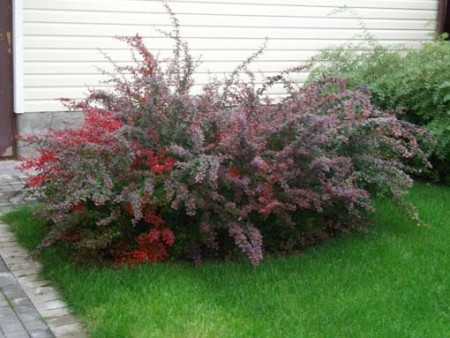
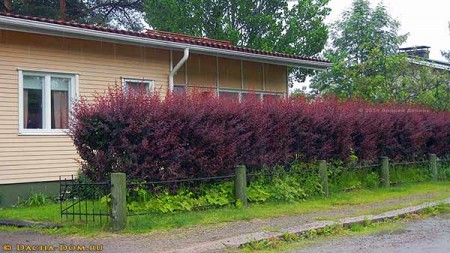
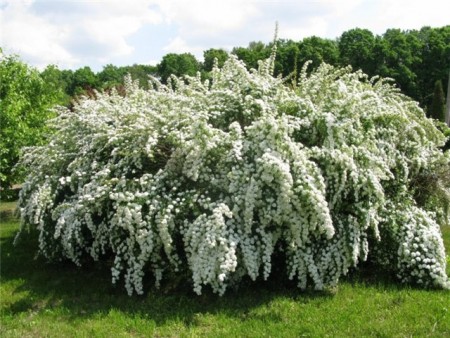
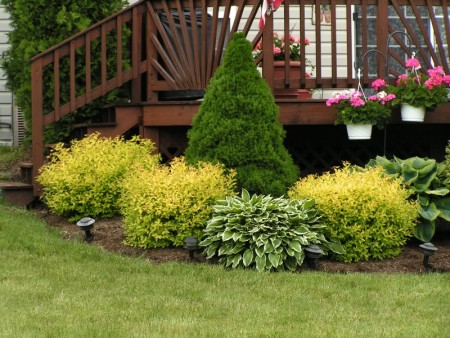
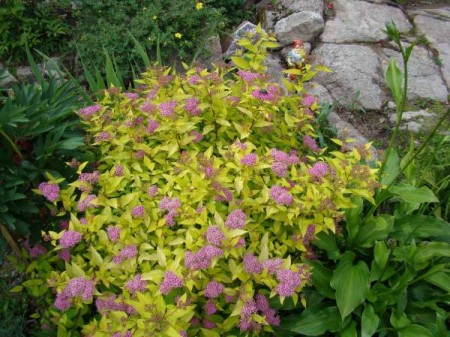
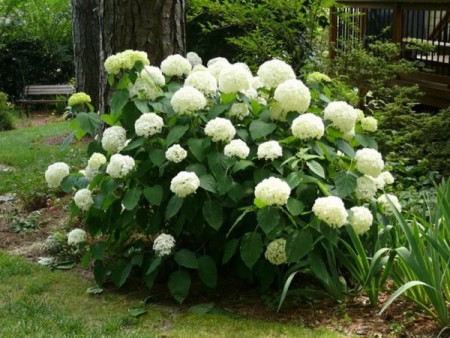
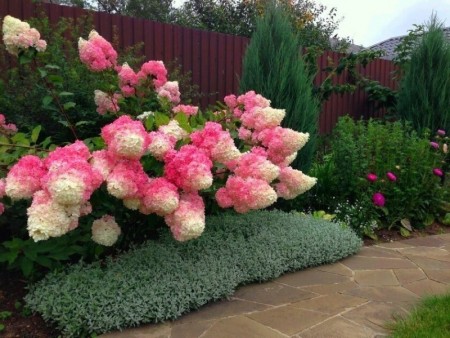
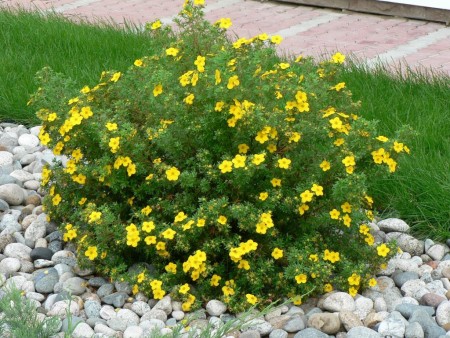
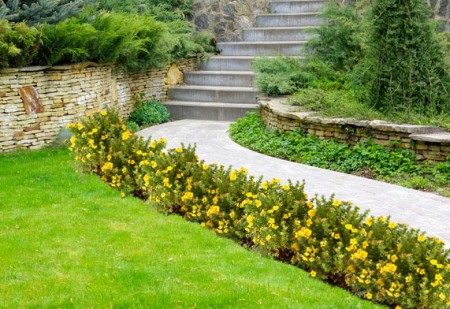
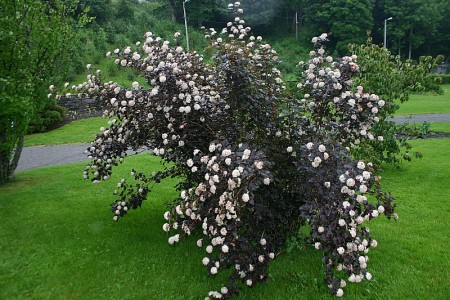
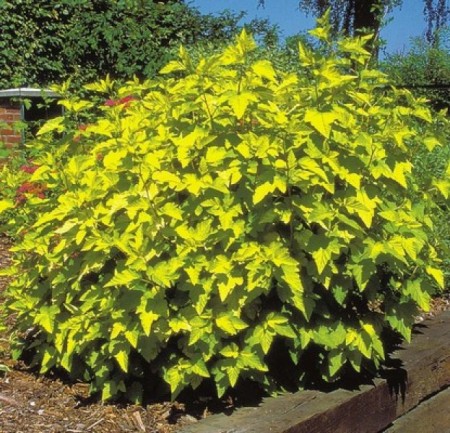
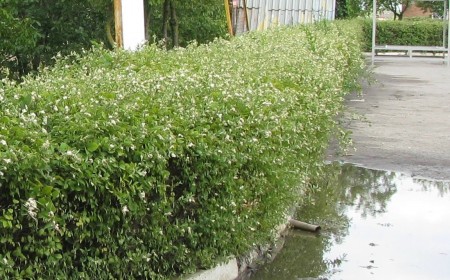
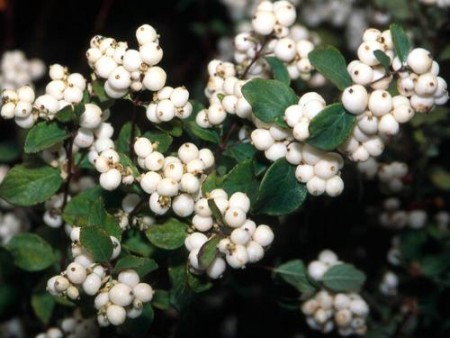
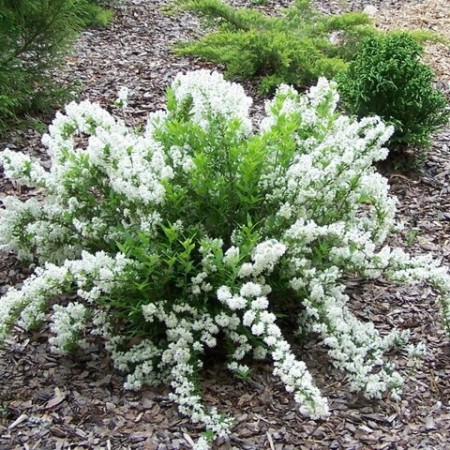
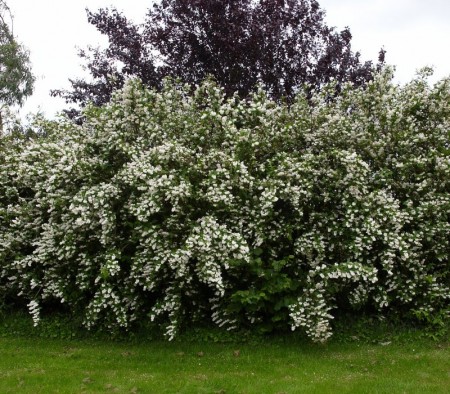
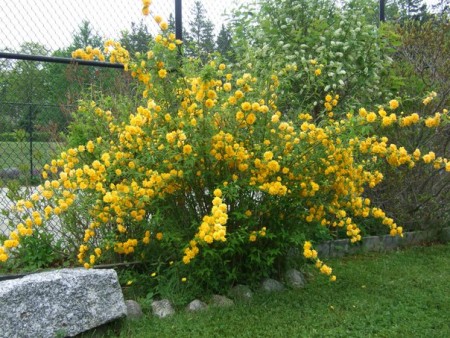
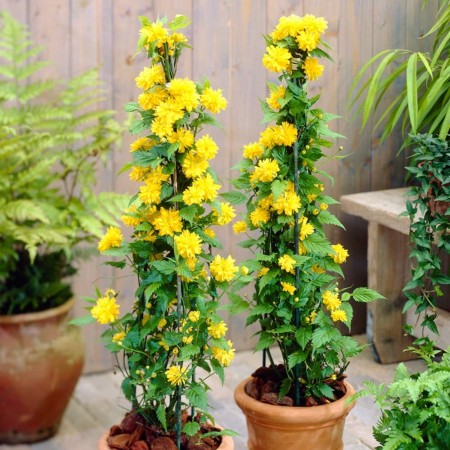
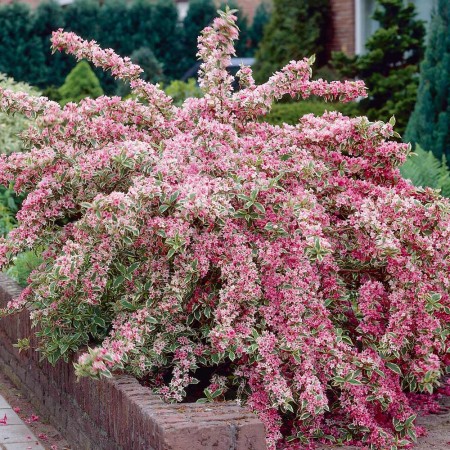
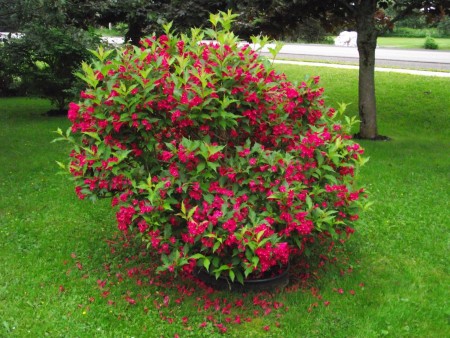
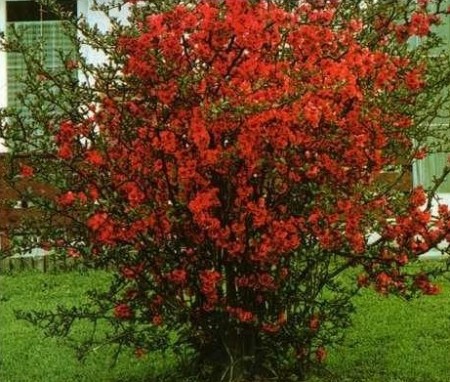
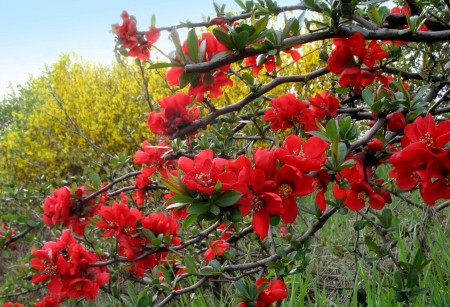

 (29 ratings, average: 4,28 out of 5)
(29 ratings, average: 4,28 out of 5) CUCUMBERS NEVER GET SICK, I'VE BEEN USING ONLY THIS FOR 40 YEARS! I SHARE A SECRET WITH YOU, CUCUMBERS ARE LIKE THE PICTURE!
CUCUMBERS NEVER GET SICK, I'VE BEEN USING ONLY THIS FOR 40 YEARS! I SHARE A SECRET WITH YOU, CUCUMBERS ARE LIKE THE PICTURE! You can dig a bucket of potatoes from each bush. Do you think these are fairy tales? Watch the video
You can dig a bucket of potatoes from each bush. Do you think these are fairy tales? Watch the video
 How our fellow gardeners work in Korea. There is a lot to learn and just fun to watch.
How our fellow gardeners work in Korea. There is a lot to learn and just fun to watch. Eye trainer. The author claims that with daily viewing, vision is restored. They don't charge money for views.
Eye trainer. The author claims that with daily viewing, vision is restored. They don't charge money for views. A 3-ingredient cake recipe in 30 minutes is better than Napoleon. Simple and very tasty.
A 3-ingredient cake recipe in 30 minutes is better than Napoleon. Simple and very tasty. Therapeutic exercises for cervical osteochondrosis. A complete set of exercises.
Therapeutic exercises for cervical osteochondrosis. A complete set of exercises. Which indoor plants match your zodiac sign?
Which indoor plants match your zodiac sign? What about them? Excursion to German dachas.
What about them? Excursion to German dachas.
Comments: 1